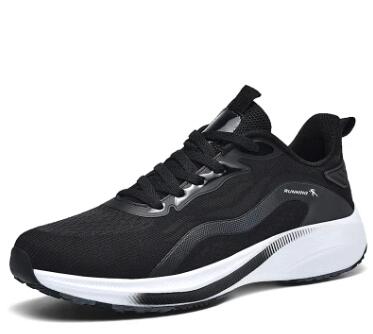What are the key components of a sports shoe
2023-10-27
Sports shoes are designed with several key components that work together to provide the necessary support, comfort, and performance features required for various athletic activities. The main components of a sports shoe include:
1. Upper: The upper is the top part of the shoe that covers the foot. It is typically made from various materials, such as synthetic mesh, leather, or knit fabric. The upper provides breathability, support, and protection for the foot. Different sports shoes may have uppers designed for specific purposes, such as flexibility for running or ankle support for basketball.
2. Toe Box: The toe box is the front part of the upper that surrounds the toes. It should provide ample space to accommodate the toes comfortably without constriction. A roomy toe box helps prevent issues like bunions and blisters.
3. Lacing System: The lacing system consists of eyelets or loops through which shoelaces are threaded to secure the shoe on the foot. Sports shoes often have specialized lacing systems that allow for a customizable fit and improved support during athletic activities.
4. Tongue: The tongue is the padded flap of material located under the laces and on top of the foot. It helps protect the foot from pressure and friction caused by the laces and adds comfort. Some sports shoes have gusseted tongues to prevent debris from entering the shoe.
5. Collar: The collar is the cushioned area around the opening of the shoe that surrounds the ankle. It provides support and comfort, and its design varies based on the type of sports shoe. High-top sports shoes have a higher collar for added ankle support.
6. Heel Counter: The heel counter is a rigid structure or insert that surrounds the heel to provide stability and prevent excessive heel movement during physical activities. It reduces the risk of blisters and heel pain.
7. Insole or Sockliner: The insole, also known as a sockliner, is a removable insert inside the shoe that offers additional cushioning and support. In some sports shoes, the insole can be replaced with custom orthotic insoles for enhanced comfort and support.
8. Midsole: The midsole is a critical component responsible for cushioning and shock absorption. It is typically made of foam or other cushioning materials that reduce the impact of each step or stride during athletic activities. Different sports shoes may have varying midsole designs and technologies to cater to specific sports or foot types.
9. Outsole: The outsole is the bottom part of the shoe that comes into contact with the ground. It is designed with a specific tread pattern to provide traction and grip on various surfaces. Sports shoes often have outsoles with patterns optimized for their intended use, such as running, basketball, or hiking.
10. Toe Bumper: Some sports shoes feature a reinforced toe bumper made of rubber or other protective materials to guard against toe injuries and impacts, especially in outdoor and rugged environments.
These key components work together to provide the necessary comfort, support, and performance features for different sports and physical activities. The combination of materials and technologies used in each component can vary widely among sports shoe models, making them suitable for specific purposes and foot types.



